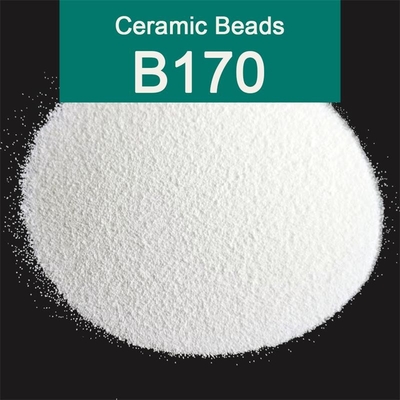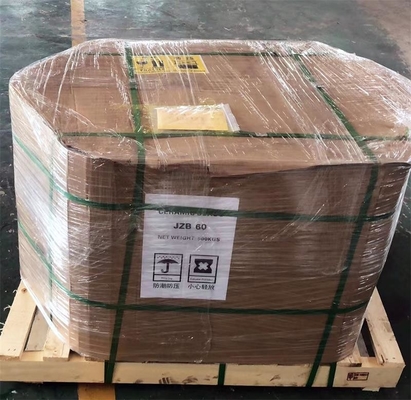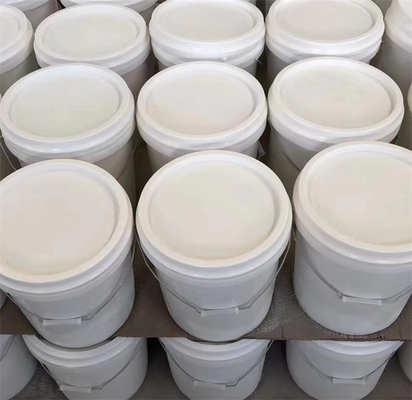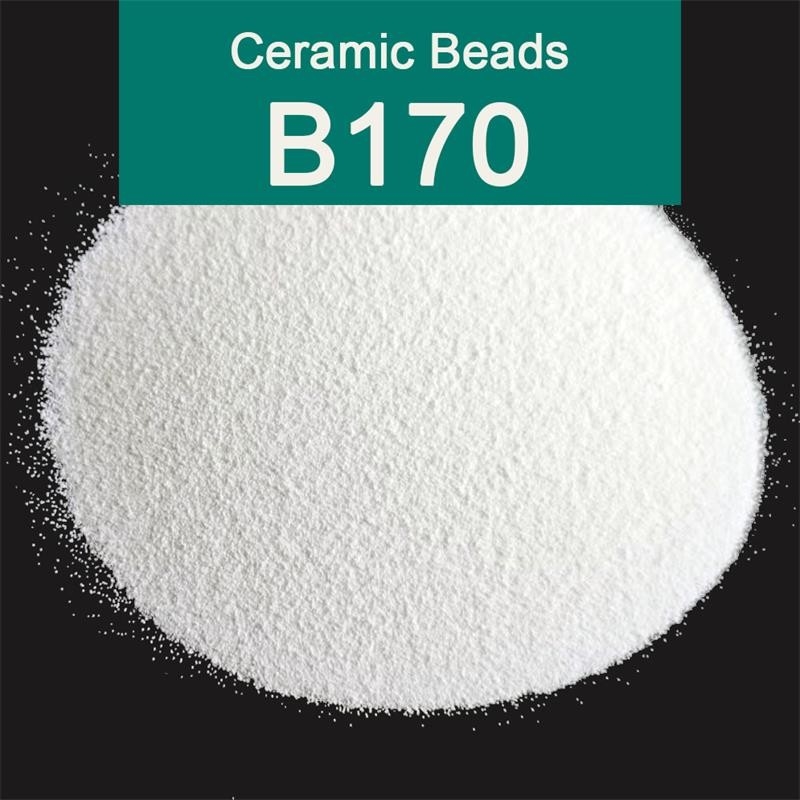B170 Sandblasting Ceramic Polishing Beads 0.045 - 0.090mm For Metal Surface Treatment
Product Details:
| Place of Origin: | Zhengzhou |
| Brand Name: | Zhengtong |
| Certification: | N/A |
| Model Number: | B20-B505 |
Payment & Shipping Terms:
| Minimum Order Quantity: | 100KGS |
|---|---|
| Price: | Negotiation |
| Packaging Details: | 12.5kgs/barrel, 25kgs (2 barrels)/paper carton, or 25kgs barrels +pallet |
| Delivery Time: | 5-10 days |
| Supply Ability: | 1500mt per year |
|
Detail Information |
|||
| Commodity Name: | Ceramic Beads Blasting Media | Chemical Index: | ZrO2 60-66%, SiO2 25-30%, Al2O3 7-13% |
|---|---|---|---|
| Manufacturing Process: | Melting Method | Bulk Density: | 2.3g.cm3 |
| True Density: | 3.85g/cm3 | Hardness: | 700HV |
| Package: | 25kgs Paper Cartons Or 25kgs Barrels +pallet | ||
| Highlight: | B170 Sandblasting Ceramic Polishing Beads,Sandblasting Ceramic Polishing Beads,0.090mm Ceramic Bead Blasting |
||
Product Description
2.Sandblasting Ceramic Beads B170 size 0.045-0.090mm for metal surface treatment
DESCRIPTION OF CERAMIC BEADS
Sandblastinge Ceramic bead is also called zirconia sand. It is zirconia-based blasting media, obtained in melting method and then blowing into muciro beads. The sandblasting ceramic beads are no dust, durable and efficient, offering consistent surface finishing, are new eco-friendly blasting material, widely used for blast matte finish, blast surface cleaning and surface preparation before coating or anodizing.
Mainly used in sandblasting machine, including Manual & Automatic sandblasting machine, Open type sandblasting machine and Sandblasting machine room, and shot peening equipment, etc.
SPECIFICATION OF CERAMIC BEADS
Manufacturing process: Melting method
| ZrO2 | SiO2 | Al2O3 | Other |
| 60-66%, | 25-30% max. | 7-13% max. | 5-8% |
| Color | Bulk Density | True Specific Density | Vickers Hardness |
| White | 2.3g/cm3 | 3.85g/cm3 | 700 HV |
| Grit size | B20 | B30 | B40 | B60 | B80 | B100 | B120 |
| Microns μm | 600-850 | 425-600 | 250-425 | 125-250 | 180-250 | 125-180 | 63-125 |
| Grit size | B125 | B170 | B205 | B400 | B505 |
Special sizes |
|
| Microns μm | 0-125 | 45-90 | 0-63 | 30-63 | 0-63 | ||
| Grit size | Z850 | Z600 | Z425 | Z300 | Z210 | Z150 | Z100 |
| Microns | 850-1180 | 600-850 | 425-600 | 300-425 | 210-300 | 150-210 | 100-150 |
COMPARISION OF SANDBLASTING OF CERAMIC BEADS VS GLASS BEADS
We have some study on the comparison on cost of blasting and life against ceramic beads and glass beads.
| Workpiece | Blasting Media | Consumption Mothly | Dust | Dust disposal cost |
| Aluminium alloy | Glass beads 150# | 6 Tons | Much | High |
| Aluminium alloy | Ceramic beads B170 | 0.2Tons | Very Little | Low |
APPLICATION OF CERAMIC BEADS
1. SANDBLASTING FOR ALUMINIUM PROFILES
In the sandblasting process using ceramic beads as blasting media, the surface is formed with uniform pits, which are so small that we can hardly see them with the naked eye. We can only see that the originally bright aluminum products have become matte.
Sandblasting and anodizing process application:
Widely used in aviation, electrical, electronic digital industry, machinery manufacturing, automobile, construction, light industry and other industries.
Sandblasting process classification:
According to different workpiece materials, anodizing treatment is divided into ferrous metals (steel) and non-ferrous metals (aluminum, copper, magnesium and their alloys);
The advantages by ceramic beads sandblasting are:
1. Remove the oxide film on the surface of aluminum profile products, whether it is a naturally formed oxide film or an anodized film, it can be completely removed after sandblasting. This is why the sandblasting process precedes the anodizing sequence.
2. Prepare for other surface treatment procedures. When the aluminum profile after sandblasting is electroplated, the bonding force of the electroplating layer is stronger. The sandblasted aluminum profile can also be sprayed to enhance the coating adhesion.
2. OTHER APPLICTIONS
Includes metal surface treatment, metal rust removal, hardware rust removal, stainless steel material sandblasting, copper material sandblasting, hardware paint removal, hardware scar removal, aluminum alloy deburring, Zinc alloy blasting finish. etc.
![]()






